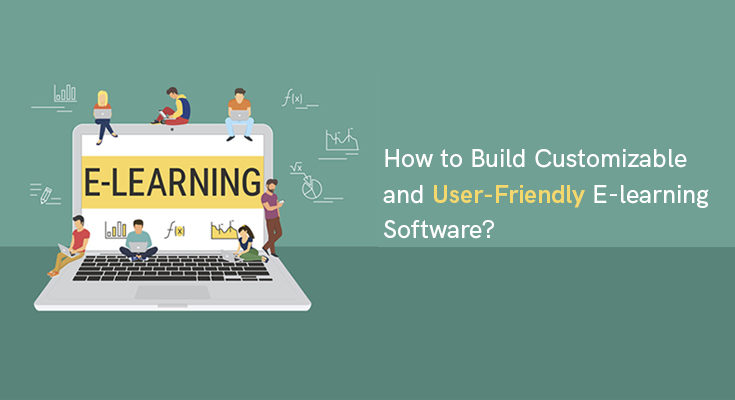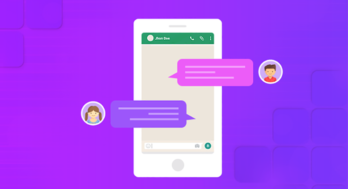There is hardly any time these days for people to go to some institute or college to learn some professional courses. Add to this the leisure of staying at home and studying. Where these lead us to? The answer is very simple. Learning through computers which are having an internet connection and can connect to some professional who is quite good at teaching what you want to learn. The concept is termed as E-Learning. Today, you can find a number of sites that provide you with online classes or e-learning. Examples can range from Udemy, Code Academy, Skill Crush, Hack Design, Ed2Go, Hippo Campus, Udacity, Google Code, Apple Developer Site, Plural Sight, and of course not to forget the sites for beginners aka w3schools, tutorial point and many more. What we see in all those sites is not a day’s work. It requires a lot of planning and effort before the e-learning site becomes a reality and can be implemented.
It is not an impossible feat to create an eLearning course, even if you don’t have much experience in this industry. Here we’ll show you the steps that can help you create eLearning courses easily and help your learners achieve their academic goals. As against the common belief, creating such e-learning sites is not time-consuming or even a cause for stress. However, to do this the developers need to be familiar with certain tips and tricks to avoid any headaches while creating good e-learning sites.
1. The Authoring Tools. To get started with the development of such a site, you might need authoring tools that are best suited to your team. If your team is not well conversant with the tools you provide them with, you may end up having a site that the users might not appreciate despite your best authoring tools. If the developers’ skills do not match the tools, go for some easy to use tools that provide templates and graphics already built into them. However, you might also come across a team that is very well versed in the latest tools around. Do not hesitate to provide them with an advanced set of these authoring tools to please your clients with a good looking UI and better features. This will also help the developers to create dynamic websites very easily with all the functionality required of an e-learning website.
2. Audience and Content Delivery. This is something you have to do before anything else. Know your audience, their interests, and most importantly their language specifications. It is very important for the audience to understand what you say. Anything not understood will be a waste of too many resources. In all likelihood, it would be good practice to hire professionals who know about the content you wish to deliver. There are subject matter experts available these days who can guide you on what content to include and what not to. As for the audience, you’ll want invaluable input through surveys, interviews, and focus groups, so you’ll have a thorough understanding of what they’re looking to achieve through taking the e-Learning course and their aspirations in general.
3. Templates. There is a range of e-Learning tools and websites that allow you to access page layout templates that can be used in the design of your eLearning course. Instead of creating your own pages on the website, it is much easier and less time consuming to use such templates. You can even modify some of the e-Learning models to include branding. It allows less experienced e-Learning practitioners to create their own e-learning courses without any knowledge of programming or design. On the other hand, e-Learning veterans can use these templates to model a course for e-Learning easily if they do not have the resources or time frame to build their own template.
4. Multimedia. If you lack either the skills or the tools for creating multimedia elements by yourself, you can simply integrate links to videos, presentations, and any other online resources into your e-Learning course directly. This allows the students to easily access information without having to search the entire web for the multimedia content they want. It also makes your eLearning course look more polished and professional, as many videos and online presentations can be played directly within the eLearning course, such as those on YouTube. But there is a hindrance to this. Do not include too many videos or graphics (as many budding developers might do) on the website. This will only make it heavier and slow down the processing. Do not compromise with performance whatsoever the case might be. Keep things simple and easy. If you are familiar with developing and implementing advanced e-Learning scenarios and simulations, do include them, but without feeling obliged to do that. By minimizing the elements of video, audio, and graphics, one not only makes the design and development process less stressful but also keeps the e-Learning course focused on what is really important, i.e. The subject matter or the actual content for which the user has come to you. Concentrate on the content itself and ensure that every element you do include serves the primary learning goals and objectives.
So now that we know the tips and tricks to develop an e-Learning sit, let’s delve a little bit into learning about the various tools that are at our service for developing such a site.
- What fix: What fix is a brand adoption system that allows trainers in the form of real-time in-app feedback to develop immersive learning material. This in-app training includes the workers step-by-step and allows them to perform specific tasks on the website. Contrary to traditional training methods in which employees are non-intuitively trained, in-app guidance focuses on training employees in the live environment of any software application that ensures that they are learning while doing so. It improves upon the capabilities of an LMS with interactive walkthroughs which when created can also be rendered as PDFs, videos, slideshows, and smart URLs.
- Adobe Captivate: It is an educational development application that lets you develop interactive content in eLearning and turn non-mobile courses into digital learning content. Captivate solves the problem of websites that are not responsive and can be used to build courses, LMS assessments, presentations, etc. Adobe Captivate offers a wide range of design options that can appeal to experienced instructional developers and non-tech savvy users.
- Articulate Storyline: Articulate Storyline is software that uses its built-in models, characters, theme library, and other graphics to create online instruction modules. This can be used to create slideshows, screencasts, computer models, interactive timelines, and more by anyone from professional course developers to current subject matter experts. The interface of the Storyline is almost identical to that of Microsoft PowerPoint but has much more to offer in terms of branching, interactivity, prompts, transitions, screen, and video capture, etc.
- Camtasia: Camtasia is an eLearning tool used for screen capturing, editing, and adding effects, so in a matter of minutes you can create training videos. Monitor the entire screen or just a part of it with this instructional design program, monitor mouse movements, and keystrokes, annotate, and more.
- Snagit: To set up instructions as eLearning lessons, Snagit is used to create quick, spontaneous videos. With this, capture every part of the screen, document actions, annotate the captured items, and make eLearning courses part of real-life screens.
- QuizGame: It is a tool for gamifying training in the business. Such gamification’s main focus is to improve the acquisition of awareness of learning. Through bite-sized formats, everybody learns more, and quizzes are as large as bite-size can get. While focusing on increasing employee engagement with the training material, this method has helped to reduce training costs. It allows them to be heard and receive feedback.
Conclusion
With e-Learning becoming a requirement of our professional life, there are abundant tools available to us in the market. Using these tools and the knowledge of how to develop an e-Learning site, one can easily provide his/her clients with the kind of training they require to meet their objectives.




